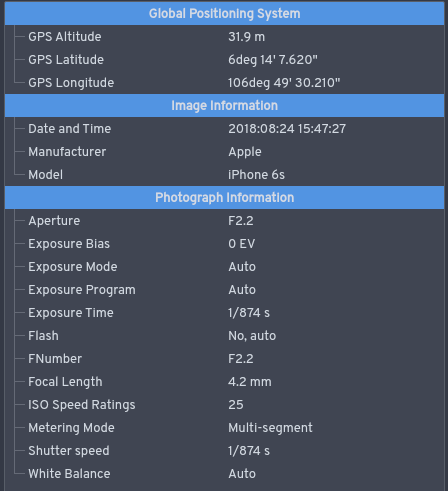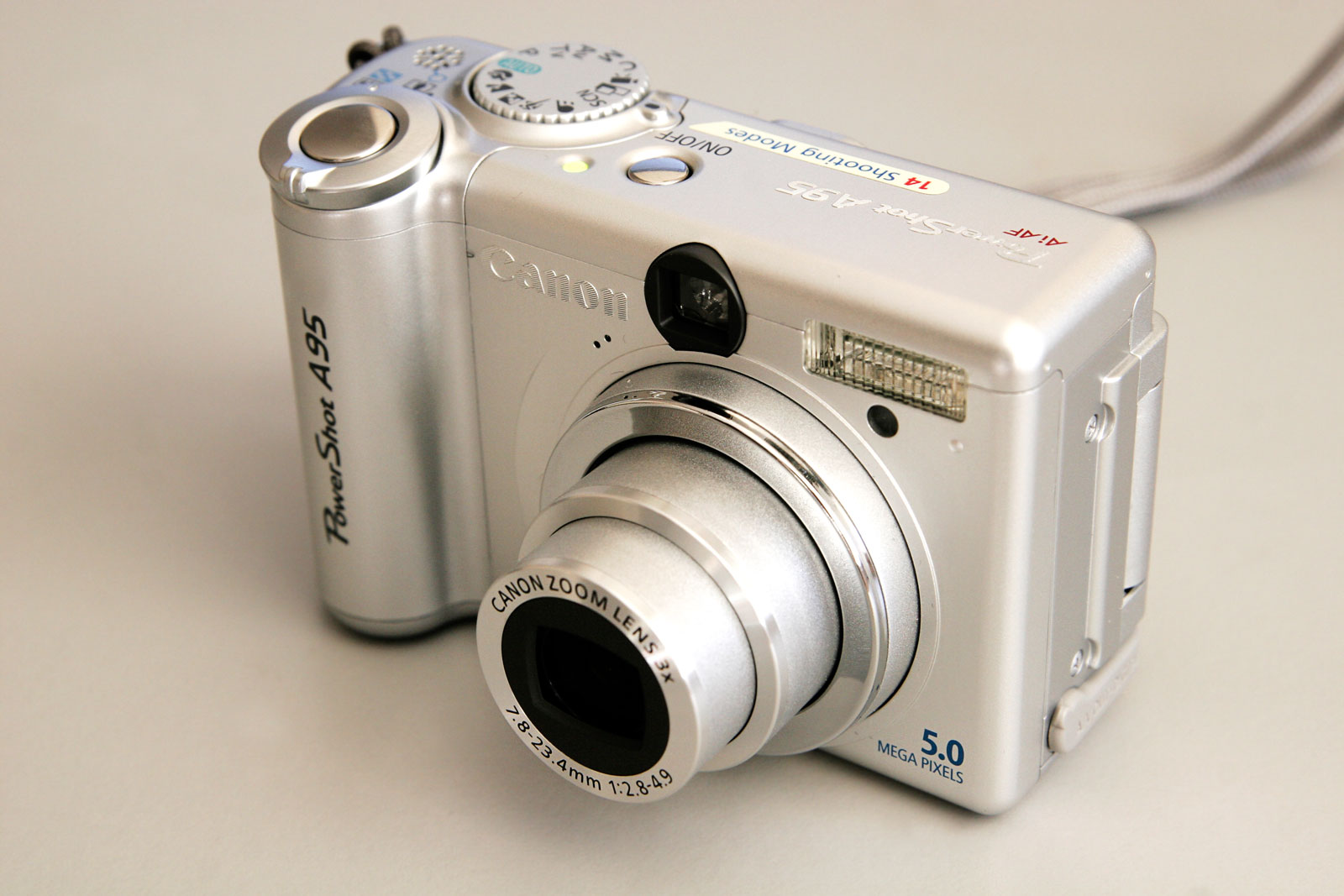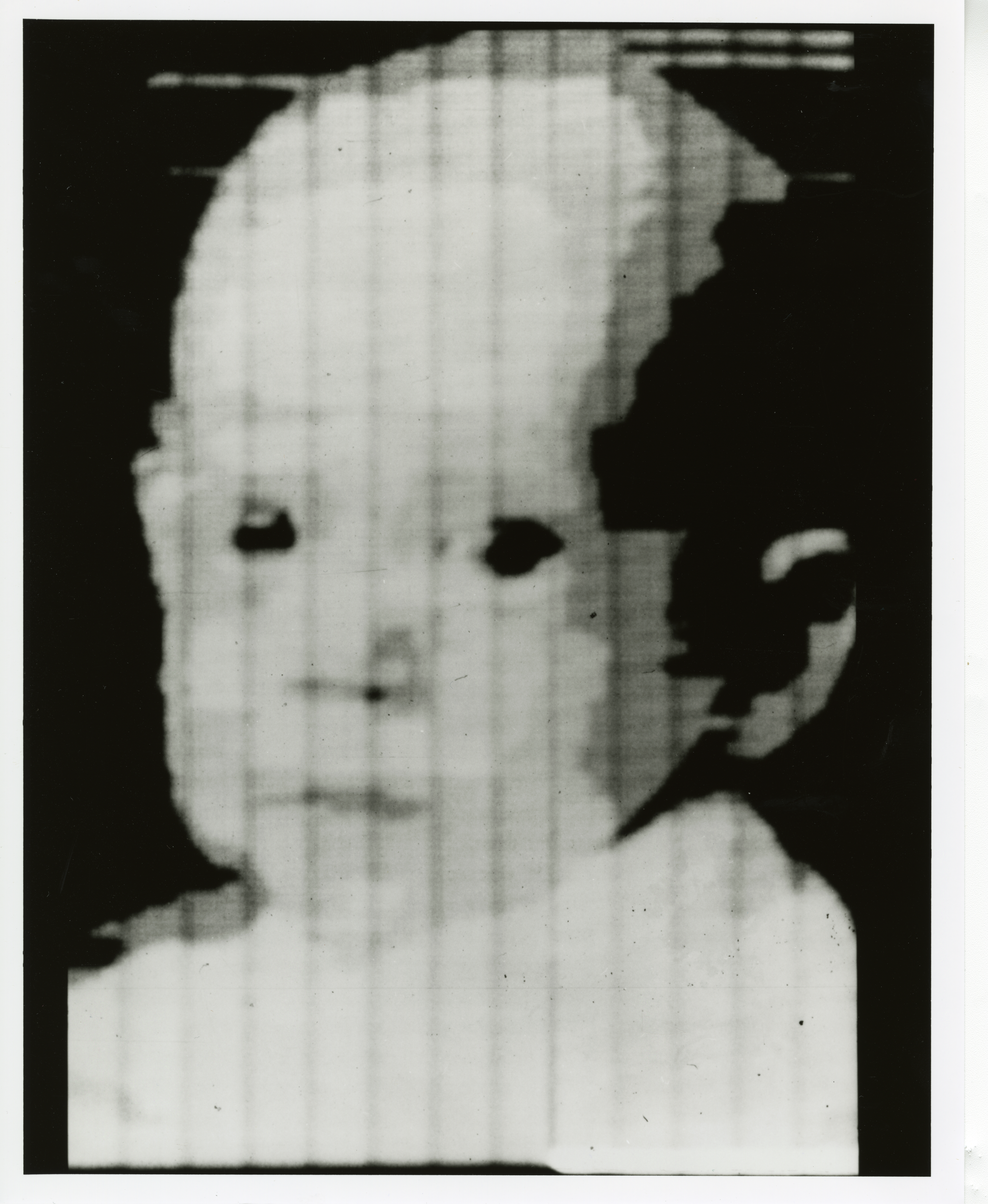|
JPEG
JPEG ( ) is a commonly used method of lossy compression for digital images, particularly for those images produced by digital photography. The degree of compression can be adjusted, allowing a selectable tradeoff between storage size and image quality. JPEG typically achieves 10:1 compression with little perceptible loss in image quality. Since its introduction in 1992, JPEG has been the most widely used image compression standard in the world, and the most widely used digital image format, with several billion JPEG images produced every day as of 2015. The term "JPEG" is an acronym for the Joint Photographic Experts Group, which created the standard in 1992. JPEG was largely responsible for the proliferation of digital images and digital photos across the Internet, and later social media. JPEG compression is used in a number of image file formats. JPEG/ Exif is the most common image format used by digital cameras and other photographic image capture devices; along with ... [...More Info...] [...Related Items...] OR: [Wikipedia] [Google] [Baidu] |
Joint Photographic Experts Group
The Joint Photographic Experts Group (JPEG) is the joint committee between ISO/IEC JTC 1/SC 29 and ITU-T Study Group 16 that created and maintains the JPEG, JPEG 2000, JPEG XR, JPEG XT, JPEG XS, JPEG XL, and related digital image standards. It also has the responsibility for maintenance of the JBIG and JBIG2 standards that were developed by the former Joint Bi-level Image Experts Group. Within ISO/IEC JTC 1, JPEG is Working Group 1 (WG 1) of Subcommittee 29 (SC 29) and has the formal title ''JPEG Coding of digital representations of images'', where it is one of eight working groups in SC 29. In the ITU-T (formerly called the CCITT), its work falls in the domain of the ITU-T Visual Coding Experts Group (VCEG), which is Question 6 of Study Group 16. JPEG has typically held meetings three or four times annually in North America, Asia and Europe (with meetings held virtually during the COVID-19 pandemic). The chairman of JPEG (termed its ''Convenor'' in ISO/IEC terminology) i ... [...More Info...] [...Related Items...] OR: [Wikipedia] [Google] [Baidu] |
Image File Formats
An Image file format is a file format for a digital image. There are many formats that can be used, such as JPEG, PNG, and GIF. Most formats up until 2022 were for storing 2D images, not 3D ones. The data stored in an image file format may be compressed or uncompressed. If the data is compressed, it may be done so using lossy compression or lossless compression. For graphic design applications, vector formats are often used. Some image file formats support transparency. Raster formats are for 2D images. A 3D image can be represented within a 2D format, as in a stereogram or autostereogram, but this 3D image will not be a true light field, and thereby may cause the vergence-accommodation conflict. Image files are composed of digital data in one of these formats so that the data can be displayed on a digital (computer) display or printed out using a printer. A common method for displaying digital image information has historically been rasterization. Image file sizes The ... [...More Info...] [...Related Items...] OR: [Wikipedia] [Google] [Baidu] |
Image Format
An Image file format is a file format for a digital image. There are many formats that can be used, such as JPEG, PNG, and GIF. Most formats up until 2022 were for storing 2D images, not 3D ones. The data stored in an image file format may be compressed or uncompressed. If the data is compressed, it may be done so using lossy compression or lossless compression. For graphic design applications, vector formats are often used. Some image file formats support transparency. Raster formats are for 2D images. A 3D image can be represented within a 2D format, as in a stereogram or autostereogram, but this 3D image will not be a true light field, and thereby may cause the vergence-accommodation conflict. Image files are composed of digital data in one of these formats so that the data can be displayed on a digital (computer) display or printed out using a printer. A common method for displaying digital image information has historically been rasterization. Image file sizes The s ... [...More Info...] [...Related Items...] OR: [Wikipedia] [Google] [Baidu] |
JFIF
The JPEG File Interchange Format (JFIF) is an image file format standard published as ITU-T Recommendation T.871 and ISO/IEC 10918-5. It defines supplementary specifications for the container format that contains the image data encoded with the JPEG algorithm. The base specifications for a JPEG container format are defined in Annex B of the JPEG standard, known as JPEG Interchange Format (JIF). JFIF builds over JIF to solve some of JIF's limitations, including unnecessary complexity, component sample registration, resolution, aspect ratio, and color space. Because JFIF is not the original JPG standard, one might expect another mime-type. However, it is still registered as "image/jpeg" (indicating its primary data format rather than the amended information). JFIF is mutually incompatible with the newer Exchangeable image file format (Exif). Purpose JFIF defines a number of details that are left unspecified by the JPEG Part 1 standard ( ISO/IEC 10918-1, ITU-T Recommendation T.81 ... [...More Info...] [...Related Items...] OR: [Wikipedia] [Google] [Baidu] |
Image Compression
Image compression is a type of data compression applied to digital images, to reduce their cost for storage or transmission. Algorithms may take advantage of visual perception and the statistical properties of image data to provide superior results compared with generic data compression methods which are used for other digital data. Lossy and lossless image compression Image compression may be lossy or lossless. Lossless compression is preferred for archival purposes and often for medical imaging, technical drawings, clip art, or comics. Lossy compression methods, especially when used at low bit rates, introduce compression artifacts. Lossy methods are especially suitable for natural images such as photographs in applications where minor (sometimes imperceptible) loss of fidelity is acceptable to achieve a substantial reduction in bit rate. Lossy compression that produces negligible differences may be called visually lossless. Methods for lossy compression: * Transform ... [...More Info...] [...Related Items...] OR: [Wikipedia] [Google] [Baidu] |
Exif
Exchangeable image file format (officially Exif, according to JEIDA/JEITA/CIPA specifications) is a standard that specifies formats for images, sound, and ancillary tags used by digital cameras (including smartphones), scanners and other systems handling image and sound files recorded by digital cameras. The specification uses the following existing encoding formats with the addition of specific metadata tags: JPEG lossy coding for compressed image files, TIFF Rev. 6.0 ( RGB or YCbCr) for uncompressed image files, and RIFF WAV for audio files (linear PCM or ITU-T G.711 μ-law PCM for uncompressed audio data, and IMA- ADPCM for compressed audio data). It does not support JPEG 2000 or GIF encoded images. This standard consists of the Exif image file specification and the Exif audio file specification. Background Exif is supported by almost all camera manufacturers. The metadata tags defined in the Exif standard cover a broad spectrum: * Camera settings: This includes sta ... [...More Info...] [...Related Items...] OR: [Wikipedia] [Google] [Baidu] |
Lossy Compression
In information technology, lossy compression or irreversible compression is the class of data compression methods that uses inexact approximations and partial data discarding to represent the content. These techniques are used to reduce data size for storing, handling, and transmitting content. The different versions of the photo of the cat on this page show how higher degrees of approximation create coarser images as more details are removed. This is opposed to lossless data compression (reversible data compression) which does not degrade the data. The amount of data reduction possible using lossy compression is much higher than using lossless techniques. Well-designed lossy compression technology often reduces file sizes significantly before degradation is noticed by the end-user. Even when noticeable by the user, further data reduction may be desirable (e.g., for real-time communication or to reduce transmission times or storage needs). The most widely used lossy compression al ... [...More Info...] [...Related Items...] OR: [Wikipedia] [Google] [Baidu] |
Lossy Compression
In information technology, lossy compression or irreversible compression is the class of data compression methods that uses inexact approximations and partial data discarding to represent the content. These techniques are used to reduce data size for storing, handling, and transmitting content. The different versions of the photo of the cat on this page show how higher degrees of approximation create coarser images as more details are removed. This is opposed to lossless data compression (reversible data compression) which does not degrade the data. The amount of data reduction possible using lossy compression is much higher than using lossless techniques. Well-designed lossy compression technology often reduces file sizes significantly before degradation is noticed by the end-user. Even when noticeable by the user, further data reduction may be desirable (e.g., for real-time communication or to reduce transmission times or storage needs). The most widely used lossy compression al ... [...More Info...] [...Related Items...] OR: [Wikipedia] [Google] [Baidu] |
Digital Camera
A digital camera is a camera that captures photographs in digital memory. Most cameras produced today are digital, largely replacing those that capture images on photographic film. Digital cameras are now widely incorporated into mobile devices like smartphones with the same or more capabilities and features of dedicated cameras (which are still available). High-end, high-definition dedicated cameras are still commonly used by professionals and those who desire to take higher-quality photographs. Digital and digital movie cameras share an optical system, typically using a lens with a variable diaphragm to focus light onto an image pickup device. The diaphragm and shutter admit a controlled amount of light to the image, just as with film, but the image pickup device is electronic rather than chemical. However, unlike film cameras, digital cameras can display images on a screen immediately after being recorded, and store and delete images from memory. Many digital cameras can al ... [...More Info...] [...Related Items...] OR: [Wikipedia] [Google] [Baidu] |
Digital Photography
Digital photography uses cameras containing arrays of electronic photodetectors interfaced to an analog-to-digital converter (ADC) to produce images focused by a lens, as opposed to an exposure on photographic film. The digitized image is stored as a computer file ready for further digital processing, viewing, electronic publishing, or digital printing. Digital photography spans a wide range of applications with a long history. In the space industry, where much of the technology originated, it pertains to highly customized, embedded systems combined with sophisticated remote telemetry. Any electronic image sensor can be digitized; this was achieved in 1951. The modern era in digital photography is dominated by the semiconductor industry, which evolved later. An early semiconductor milestone was the advent of the charge-coupled device (CCD) image sensor, first demonstrated in April 1970; the field has advanced rapidly and continuously ever since, paced by concurr ... [...More Info...] [...Related Items...] OR: [Wikipedia] [Google] [Baidu] |
Digital Photo
Digital photography uses cameras containing arrays of electronic photodetectors interfaced to an analog-to-digital converter (ADC) to produce images focused by a lens, as opposed to an exposure on photographic film. The digitized image is stored as a computer file ready for further digital processing, viewing, electronic publishing, or digital printing. Digital photography spans a wide range of applications with a long history. In the space industry, where much of the technology originated, it pertains to highly customized, embedded systems combined with sophisticated remote telemetry. Any electronic image sensor can be digitized; this was achieved in 1951. The modern era in digital photography is dominated by the semiconductor industry, which evolved later. An early semiconductor milestone was the advent of the charge-coupled device (CCD) image sensor, first demonstrated in April 1970; the field has advanced rapidly and continuously ever since, paced by concurre ... [...More Info...] [...Related Items...] OR: [Wikipedia] [Google] [Baidu] |
Digital Image
A digital image is an image composed of picture elements, also known as ''pixels'', each with '' finite'', '' discrete quantities'' of numeric representation for its intensity or gray level that is an output from its two-dimensional functions fed as input by its spatial coordinates denoted with ''x'', ''y'' on the x-axis and y-axis, respectively. Depending on whether the image resolution is fixed, it may be of vector or raster type. Raster Raster images have a finite set of digital values, called ''picture elements'' or pixels. The digital image contains a fixed number of rows and columns of pixels. Pixels are the smallest individual element in an image, holding antiquated values that represent the brightness of a given color at any specific point. Typically, the pixels are stored in computer memory as a raster image or raster map, a two-dimensional array of small integers. These values are often transmitted or stored in a compressed form. Raster images can be created ... [...More Info...] [...Related Items...] OR: [Wikipedia] [Google] [Baidu] |





